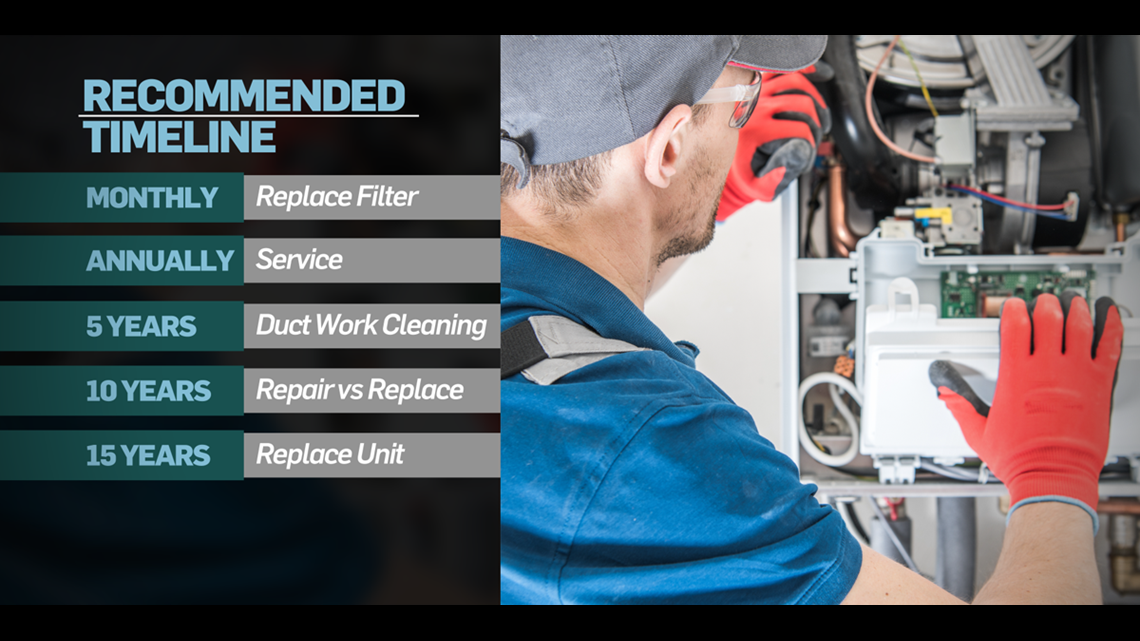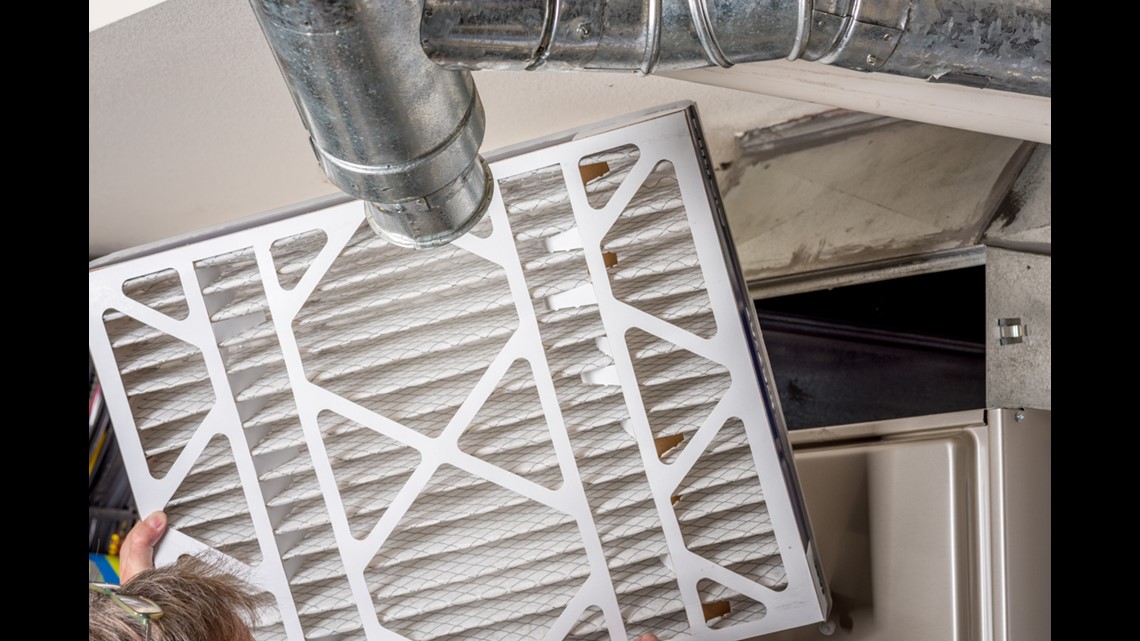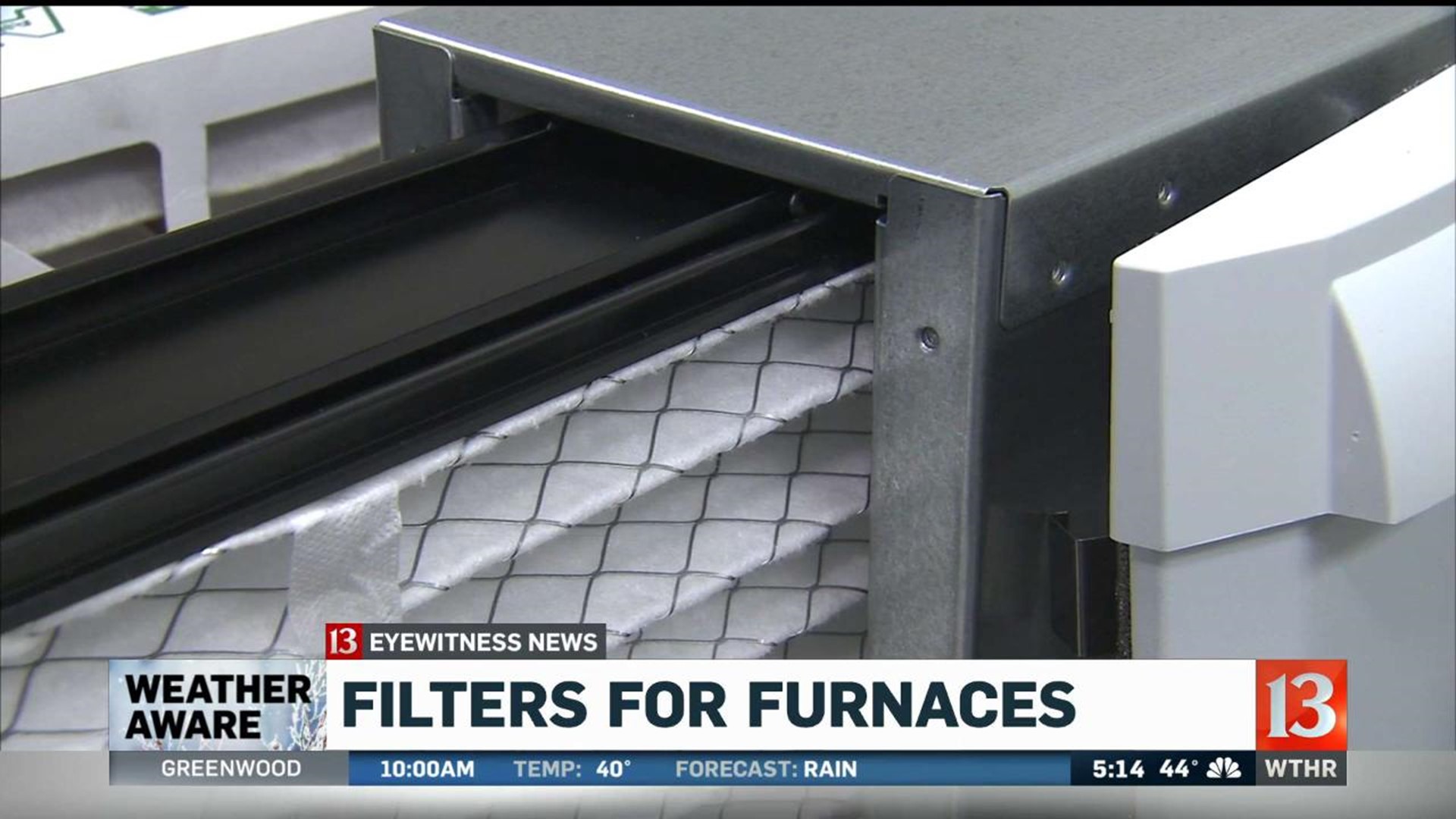INDIANAPOLIS (WTHR) — As outside temperatures go down, we turn up the thermostat to stay warm at home — firing up the furnace for the first time in up to eight months.
There is always that foul smell as dust and other sediment burns off after accumulating for several months, but how do you know when it’s time to call the experts?
“This is a healthy investment that you make. It's keeping your home safe,” said DuWayne Schnidler with Godby Heating, Plumbing, and Electrical in Indianapolis.
He recommends an annual inspection to make sure your furnace is working well — even if you’ve already had it on a few times this season.
There could be a problem right now that you won’t even know is there until it’s too late — and too cold.
“The furnace will come on, it will get too hot, the safety controls shut it off, then the furnace cools down, then it comes back on again and that's what we call short cycling," Schnidler explained. "When it's really cold outside, that's when a homeowner will notice the home isn't keeping temperature, but on the milder days it might be [short cycling], and you don't even know it."
The lack of good air flow begins this downward spiral. Godby HPE recommends this timeline to keep your investment humming along:


Replacing your filter
First, replace your filter monthly to avoid dirty air blockages.


“Believe it or not, probably half of our service calls is a dirty filter,” Schnidler said.
With so many filters out there ranging in cost and options, how do you know which one to get? Schnidler says to be basic.
“At $5, you get a really good, pleated filter," Schnidler said. "The thing about going to the more expensive filters is that you'll notice the pleat becomes a lot finer and there are a lot more pleats. What that does is you run the risk of reducing the airflow to the point that the furnace will overheat."
There are better air-filtering devices that are more like air-purifiers but often requires additional equipment to be added to your HVAC system. A good air purifier will remove particulates with a series of sophisticated filters that usually last anywhere from six months to a year.
When it comes to the more common 1” thick filter, Godby recommends a different length of life.
“I know a lot of times on these they say up to 90 days, but that's up to," Schnidler said. "Generally as a rule of thumb, I say 30 days. They're inexpensive enough. You just can't change a filter too many times."
He recommends you set a reminder to replace your filter every 30 days by linking it to something you do every month — like paying the mortgage or rent.
With a HVAC unit costing $20,000 or more on the high end, it is an investment you want to protect.
You've replaced the filter; what other precautions can you take to ensure longevity with your furnace?
Godby says you can also help ensure you have clean air for your furnace and home by having your duct work cleaned every five years.
From there, a tough conversation begins around the 10-year mark as any HVAC expenses outside of a service will have to be weighed against replacing the unit. The average unit lasts between 15 to 20 years.
When you encounter an issue, the last thing you want to do is overpay to get heat restored.
If a technician discusses a part you’ve never heard of or the quote seems too high, your best bet is to get a second opinion.
Heat exchanger, draft inducer and capacitor may sound like fake parts, but they are indeed real. Search the internet if you get told something that sounds suspicious.
“The HVAC industry is a skilled-trade industry, and it's facing the same problem that all the other skilled-trade industries are, and that's a lack of a skilled workforce so when people perceive I've been scammed, I think it's just an honest mistake," Schnidler said. "There are a lot of mistakes that happen out there due to a lack of knowledge."
Constantly getting sick? Your home could be the problem
As seasoned professionals retire, Godby has training classes to get the next generation up to speed and experience diagnosing issues correctly.
Some of those issues are surprising: for example, did you know your home could be making you sick?
The colder the temperatures get, the more we tend to want to stay indoors and hibernate, but it turns out that air could get dangerous and lead to Sick Home Syndrome.
“The indoor air is 10 times dirtier than the outdoor air, believe it or not, even with all the pollution," Schnidler said. "You have a large family that spends a lot of time in a smaller home, so you've got a lot of carbon dioxide."
It’s a problem that’s more common in newer construction, which has what Schnidler describes as tighter, better sealed walls and windows.
Without the draftiness an older home may have, the air you and your family exhales gets trapped inside your home. That includes other particulates like pet dander, cleaning supplies, and any odors, which are continually cycled through the home because most filters just remove dirt.
Solutions to dirty air inside your home
Homes that tend to have issues with particulates would benefit from an Energy Recovery Ventilator (ERV) or plasma generator, Schnidler said.
Godby can also use a device that tests the air to see what’s inside that you can’t see. The Air Quality Test scans the air for contents and particulates and can generate a report about the air content.
Sometimes it finds issues — like a cough or watery eyes, for example — which can instead be caused by something like new carpet.
Humid air can also help combat Sick Home Syndrome and assist the dryness of the air, including a unit that can be installed to the duct work that adds water to the air without ever having to refill it.
“The nice thing about this vs. the stand-alone units you buy is that it gets its own water supply from the home and trickles down this pad, hot air goes across it and creates that humidity,” Schnidler detailed.
The average unit costs around $600 including installation.
Click here for more information on furnace inspection and repair.

